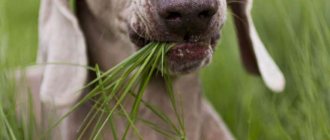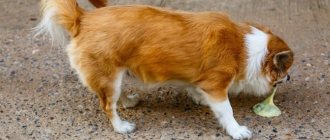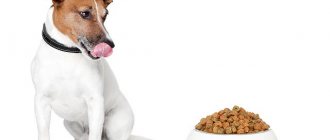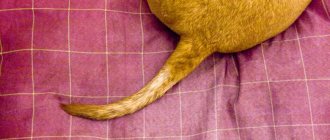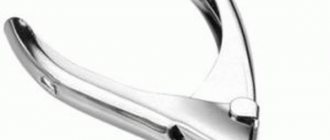Recently, more and more Yorkshire terrier puppies are being born with weak ear cartilages, which is why the ears rise untimely or do not rise at all. Any difference from the standard is considered a defect and the Yorkie may not be allowed to be bred. How to install the ears of a Yorkshire Terrier will be discussed in the article.
Causes of a Yorkie's ear falling off
Many purebred puppies must have erect ears - one of the standard requirements for admission to exhibitions. There may be several reasons why a puppy’s ears fall off: heredity, poor nutrition, complications after illnesses.
Read also: How to determine your purpose in life
The resulting deficiency can easily be corrected if you carefully monitor the development of your pet and, in case of deviation from the standard norm, take the necessary measures, or seek help from a veterinarian.
Causes of the problem
In order for your pupil to grow up healthy and worthy of participation in exhibitions, you should closely monitor his development. And if any shortcoming is discovered, then correct it without delay.
If we are talking about dog ears, then puppies should ideally develop them at 2.5-3 months. If this does not happen, then you need to understand the cause of the defect. It also happens that already formed ears suddenly fall off. This happens for a number of reasons. Here they are:
- Stress due to moving. This is a common cause of the problem. When the owner brings a young pupil with already erect ears from the nursery, their appearance often worsens after a day or two. In this case, the puppy usually behaves warily, eats little, adapting to the new stop. His ears seem to be rounded and pinched because of fear. This is a fairly common reaction to stress. She's not worth worrying about. Usually after a few days, when the dog feels more confident, the ears will become erect again.
- Recent vaccination. After it, the dog’s immunity decreases slightly, the dog’s body directs its efforts to where there are problems. And the ears, or rather the cartilage, are temporarily weakened.
- Changing teeth. The mammary organs of chewing undergo radical changes in the age period from 3 to 6 months. Very often at this time the ear cartilage also weakens. They will gain strength again when all of the dog's teeth are completely replaced.
- The young dog has large and thin ears, quite heavy. In this case, you will need to massage and glue them.
- Cartilage crease. Take your dog to the vet. He will teach you how to give your dog a daily massage and tell you how to supplement his diet.
- Poor nutrition. It directly affects the strength of the ear cartilage. By balancing the diet, adding nutrition in the form of gelatin and vitamins, you can easily solve the problem.
Why don't Yorkies have ears?
There are several reasons why a Yorkie's ears won't stand up:
- Genetics. Due to the mating of dogs within the same city, various genetic pathologies can arise.
- Change of teeth, during which the body lacks calcium and vitamins.
- Cartilage size. With the rapid development of cartilage tissue, the ear cartilage becomes too heavy and cannot take a vertical position.
- No hair trimming. If ear hair is not trimmed, it can weigh down the edges of the ears and cause them to droop. According to the breed standard, the coat should be cut in the shape of the letter V. At an early age, the hairs can be shaved down to the base, they will then grow back. The coat needs to be trimmed constantly, at any age. For this, a special machine for dogs is used; under no circumstances should you use a tool intended for people (due to stronger vibration and noise).
- Avitaminosis. If there is a lack of essential vitamins and minerals, the ears may fall, even if they were previously in the correct position.
It is almost impossible to independently determine the cause of incorrect ear position, without consulting a veterinarian. You should immediately contact a veterinary clinic, where your pet will be diagnosed and a set of measures will be recommended.
Read also: Open a brokerage account
Show all products
At what age do Yorkie ears stand up?
According to the international standard for the Yorkshire Terrier breed, the ears of a puppy older than six months should have:
- v-shape;
- medium size (relative to the head);
- set not wide, but high;
- become overgrown with thin, light wool.
However, Yorkies are born completely different: with thick, heavy hair and semi-erect cartilage. But don’t worry, because the Yorkshire Terrier’s ears stand up at the age of 1.5-4 months.
This time is different for every Yorkie puppy. For some, the shells quickly become stronger and rise on their own. For others, they take a long time to develop and require help in setting them up.
Otitis
Inflammation of the inside of the ear. Divided:
- externally – inflammation of the part of the ear canal located between the inlet and the surface of the eardrum;
- medium – inflammation spreads further, beyond the eardrum;
- internal, or deep, is the most severe form of the disease, which can lead to damage to intracranial structures.
Symptoms vary depending on the extent of the damage. With external and otitis media the following are observed:
- restlessness, desire to scratch the sore ear;
- discharge of exudate from the ear, often with an unpleasant odor;
- the dog shakes its ears;
- the visible part of the ear and ear canal is red, inflamed, swollen;
- a diseased ear is hotter than a healthy one;
- there is a decrease in appetite, lethargy;
- The dog tilts its head towards the affected ear and may spin around in place.
With deep otitis, the following are possible:
- significant enlargement of lymph nodes;
- partial or complete hearing loss;
- development of strabismus;
- disturbances in the sense of balance - the dog walks in circles.
The diagnosis is made based on clinical data. In difficult cases, laboratory and other tests are prescribed.
According to statistics, most often various cocci, Malassezia and Candida fungi are found in the ear canal, and occasionally other microorganisms are found. To prescribe adequate therapy, it is advisable to conduct a quantitative analysis, since all these microorganisms are normally contained in ear secretions and only their excess quantity indicates a disease. Treatment of otitis should be carried out under the supervision of a veterinarian. The most commonly prescribed medications are antibiotics, antifungals, anti-inflammatory drugs and, in severe cases, hormones. It is important to regularly remove debris from the ear, as it deactivates medications and increases inflammation. But cleaning the ears should be as gentle as possible, because the inflamed surface of the ear canal is very sensitive and additional damage will only aggravate the course of the disease.
Bars Forte ear drops are successfully used to treat otitis media. The active components included in the drug provide a pronounced antibacterial and antifungal effect. The course of treatment ranges from 5 to 7 days, depending on the severity of the disease.
Solution
To begin with, you need to include such useful products in your puppy’s diet as:
- chondroitin;
- glucosamine;
- fish fat;
- calcium gluconate.
But you should not give the medicine all at once, as an overdose may result - it is best to alternate. Your veterinarian will advise you in what doses to take. Regular food gelatin should be added to the dog’s food once a day at the rate of: 5 g per 200 ml of warm water.
When a puppy's teeth change, specially formulated supplements with a high content of phosphorus and calcium should be included in the diet. You should walk outside more; the sun's rays have a beneficial effect on the development of ear cartilage.
If your Yorkie puppy's ears have dropped, but this is not related to teeth or nutrition, then perhaps the reason lies in cartilage creases - you can try to correct the problem with ear massage.
It is done, if possible, 5-7 times a day:
- Insert your index finger into the inside of the ear, and leave your thumb outside.
- Using slow circular movements, pull the ear from the head to the ear tip.
This massage increases blood circulation in the ear, which helps straighten any creases, if any.
If the dog’s ears cannot stand up on their own, experts advise gluing them with a medical plaster:
- Wipe your ears with an alcohol-based disinfectant and let them dry.
- Cut out four triangles from a regular plaster in the shape of ears.
- Insert a suitable size tire into the middle of the triangle itself; it can be made of plastic.
- Glue the second triangle on top, with the adhesive side facing up, so that you can then glue the finished device to the baby’s ear.
- Do the same with the two remaining triangles.
- Glue the patch to your ears, smooth out the folds.
Thanks to this simple method, the ears will be able to remain in an upright position for a long time. The main thing is not to let the puppy scratch them or try to remove them; over time, he will get used to them.
Once a week, the stickers from the plaster should be removed and the ears should be given a short rest. Before removing the pads, lubricate them with Vaseline to avoid causing pain to your pet. After a month, the splint can be removed and one patch can be glued on, this will help the ear cartilage to develop further on its own.
If a puppy's ears fall down and have not risen by 9 months, then, unfortunately, this will no longer happen. But don’t despair too much, even though a show career won’t work out, the dog won’t stop loving you sincerely.
Why don't my ears stay up?
The cause of floppy ears in Yorkie puppies may lie in pathologies of the body. The most common problem is an infectious or congenital disease. Also, such an external defect is caused by poor care: infrequent grooming, insufficient cleaning.
There are other reasons:
- physiologically large cartilage, the weight of which does not allow the ear to stand up;
- vitamin deficiency (poor nutrition or weakened immunity due to difficult childbirth);
- too thick and dense hair also pulls the earlobe down;
- change of teeth (new incisors require a significant amount of calcium, which is why the cartilage receives less nutrition);
- weak or impaired blood flow (congenital disease or complication caused by the owner’s love of tying bows on the ears).
Important! Proper care of a Yorkie puppy and an adult dog eliminates the possible occurrence of pathological diseases and promotes the proper physical development of the animal. If the baby is kept in dirt, eats poorly, is not bathed or examined, then his cartilage is unlikely to rise.
Veterinarian recommendations
In order not to damage your Yorkie’s ears, not to disrupt the blood circulation in them, or to stop the natural process of developing shells, you need to follow the recommendations of experienced breeders and veterinarians:
- It's better to be a little late than to hurry. You can start gluing if your Yorkie's ears have not stood up for up to 4 months.
- To prevent the puppy from tearing off the patch or fixing structure, it is recommended to use an Elizabethan high collar. If there are other animals in the house, it is better to treat the ears with Anti-Gryzin solution, the smell of which will repel dogs. Pepper or garlic have a similar effect. But handling them requires caution.
- We recommend changing the bandage for your puppy every 2 days to be able to monitor the condition of the ears.
- If the structure is damaged, it can be glued with another piece of plaster.
- Yorkie puppies should be glued only with hypoallergenic materials; it is forbidden to use electrical tape.
Yorkies with semi-erect ears will not be able to participate in exhibitions, but their external qualities will not become worse. The owner of a pet-class puppy, which is intended only for home keeping, does not have to worry about the problem of recumbent cartilages.
Advice from breeders and dog owners
Marina “Well, Betty and I suffered a lot! We were told to cut first, then glue. It’s easier to get the dog’s hair cut completely, and at the same time the ears will be trimmed. And after that you can glue it.”
Natalya “I know one breeder, she bought a male dog from one of the nurseries for breeding and exhibitions. By six months his ears were no longer erect. This is how we went to exhibitions: two hours before the event we glued our ears with adhesive tape. They stood for a couple of hours, then returned to a hanging position. Maybe they teased me with something else, I don’t know for sure. It's a complete torment for the dog. My opinion is this: before getting a Yorkie, read the literature and ask other breeders. The puppy was definitely cheap, but that’s another topic…”
Reasons why a puppy's ears fall off
According to the standard, a puppy’s ears should form and stand up by 2.5-3 months. When the baby is fully nourished and does not have any hereditary defects, then by 6 months the ears should take a vertical position.
If this did not happen in time, or, having already fully formed, they unexpectedly fell, it is necessary to urgently solve the problem that has arisen.
If a shepherd puppy's ears have dropped, the cause may be: heredity, weak immunity, poor nutrition, or past illnesses.
Common reasons why ears may fall off:
- Nutrition . The strength of the ear cartilage directly depends on it. It is necessary to properly balance the diet so that it contains a sufficient amount of a complex of useful vitamins and microelements.
- Vaccination . After it, the dog’s immunity usually decreases, and the ear cartilage is temporarily weakened. To solve the problem with the ears, it is enough to drink a complex of vitamins to support the immune system.
- Teeth . Between 3 and 6 months, a dog's teeth change, which can cause weakening of the ear cartilage. When the milk teeth are completely replaced by molars, the ears will again gain strength and rise.
- Stress . One of the common causes of falling ears in a puppy. This usually happens when the environment changes; the baby, adapting to a new home, behaves warily, and his ears may shrink from fear. After a couple of days, the pet will get comfortable, begin to feel confident, and the problem will disappear by itself.
- Cartilage crease. In such a situation, the puppy must be shown to the veterinarian, he will show how to do a special massage to solve the problem. At the same time, a diet enhanced with vitamins is recommended.
How to install?
There are several effective ways to raise the ears of Yorkshire terriers, after familiarizing yourself with which, each owner will be able to choose the most convenient one for himself.
Removing excess hair
Shaving off excess hair can significantly lighten the weight of the ears and reduce the stress placed on their tips. As a result, the ears often stand up on their own and do not need to be lifted on their own. The coat should be clipped or shaved weekly from the tips almost to the base of the ears on both sides.
tube
The classic and most common way to set the ears of a Yorkshire Terrier. To do this you need:
- Wash the dog, then dry the coat and clean the ears well.
- Using a razor or clipper, remove excess hair from the ears.
- Degrease the skin with toner, micellar water or other cosmetic product.
- Take a piece of adhesive tape (preferably with a silk base to minimize the likelihood of diaper rash), the length of which is 4-5 times the width of the ear.
- Fold one edge of this piece inside out so that its sticky side touches the non-sticky side, forming a “cylinder”.
- Place the “cylinder” inside the ear and wrap the edges of the ear around it so that it takes the shape of a tube.
- Wrap the remaining part of the adhesive plaster around and secure the structure.
- Glue the ears at a short distance from each other so that they remain in an upright position.
The Yorkie should walk with the tubes for 7 days, after which, if necessary, the procedure must be repeated.
Do not wrap your pet's ears too tightly, as this may impair blood circulation.
Addition (“crown”)
The ears should be shaved first and the skin on them should be degreased. Then, to avoid the formation of wrinkles and creases, you need to fold the ear in half so that its parts touch, and secure them with a band-aid. In order for the resulting structure to be in a vertical position, it is necessary to stretch a strip of plaster from the base of one ear to the base of the other, first from the front, and then, wrapping it around the ear, from the back.
Bonding with tape
One of the simplest methods, suitable for those who are doing ear fitting for the first time:
- Remove excess hair from the ears and degrease them, then glue a triangle of tape slightly smaller than the ear contours into each ear.
- Cut a strip of tape several times longer than the width of the base of the ear.
- Attach the middle of this strip to the back of the ear.
- Glue the inner edge of the strip so that it reaches the outer edge of the ear, and glue the outer edge to the inside of the ear.
- Connect the edges of the tape to form a vertical plate from the ear.
The tape puts less pressure on the ears, so the blood supply to the soft tissues is not disrupted.
Cotton swab
Shorten the cotton swab so that its length is slightly less than the length of the ear, and wrap the bandage around the cut side, covering the sharp edges. Then place the stick vertically in the dog’s ear and glue it inside. If necessary, additionally secure the ears together with a strip of plaster or tape.
Massage
It is necessary to gently stroke the Yorkshire Terrier's ears on both sides with your thumb, index and middle fingers, gently pulling the tips upward. Such a massage, carried out regularly, helps give the pet’s ears the necessary correct shape. It is especially important to perform a massage when the ears are fixed with a plaster or tape - it helps improve blood flow.
How to help your ears stand up
First of all, proper nutrition will help your Yorkie's ears. To choose a vitamin complex, you need to contact a veterinarian.
It is important to include calcium-rich foods in your puppy’s diet:
- cottage cheese;
- kefir;
- eggs;
- eggshell powder.
Another method of setting up the ears is sound training. If you train a Yorkie puppy, often play with him using a whistle, claps or loud sounds, he will raise his ears on his own, thereby training the ligaments and strengthening the cartilage.
Important! You can only install ears on a Yorkshire Terrier if the puppy is healthy. Infectious diseases and injuries will slow down or completely stop the process of strengthening cartilage.
Ear massage
You can have your Yorkie puppy's ears fixed without using bandages. Ear massage will help with this. To do this, pinch the lobe with your thumb and forefinger and massage from top to bottom using rubbing movements.
The procedure will strengthen cartilage and improve blood flow.
Removing excess hair
Sometimes a Yorkie's ears fall off because there is too much hair on them. In this case, the shell will not bend completely, but only the tip of the ear.
You can shave the fur on the outside so that the lobe does not sag under the weight of the hairs.
Important! Hair should also be removed from the ears themselves. Inside, in the ear canal, Yorkies have no nerve endings, so plucking hairs causes almost no discomfort. This procedure will help maintain hygiene, which will also speed up the process of setting up the ears.
Tube ears
This method of setting the ears does not require any special structures with a rod or metal crowns.
- Before the procedure, the Yorkie is bathed, his ear canals are cleaned, and his lobes are shaved from the top from the inside to 1/3 of the length (loose hairs can be pulled out with tweezers).
- To seal the frame, you can place a cylindrical piece of foam rubber inside.
- The lobe is folded into a vertical tube and wrapped with a strip of fabric plaster in a circle (1 skein).
- For a more secure fixation, you can apply a bandage on top and fasten the Yorkie’s two ears with strips of plaster.
Addition
The ears of a Yorkie puppy are also placed using the folding method. The method is so named because to determine the location of sizing, the ear needs to be folded in half to see the place of the crease (the connection between the lobe and the cartilage). This area is shaved and glued with a square of plaster.
Important! Always glue 2 ears, even if one falls. This is necessary to fix and level the position of both sinks.
After gluing the two ears, they are secured with strips of plaster, forming a “bridge” between them.
Staging with tape
Yorkie puppies have their ears glued on with tape. This method is unsafe because the adhesive backing of the tape can cause irritation. But it is believed that this material catches hairs less and does not put pressure on blood vessels.
The gluing technique is no different from “folding” - attaching a wide and long (the size of the ear) strip of tape to the shaved inner part, fixing the two ears with a “bridge”.
Setting up ears with cotton swabs
The most humane way to place Yorkie ears is by gluing them on a cotton swab:
- A rounded petal in the shape of the ear is cut out of a fabric-based patch and glued to the shaved inner part.
- Place an ear cleaning stick cut to the required size on top of the patch so that the cotton ball is located at the ear canal.
- The resulting structure is once again covered with adhesive tape.
Important! To minimize pain when removing the patch, you need to soak it in vegetable oil for 3-5 minutes.
Ear placement methods
In order to put on the puppy's ears, experts recommend using the gluing method.
Tube-shaped adhesive
For this method, you will need a roll of adhesive plaster (preferably silk-based), as well as scissors and a clipper or trimmer.
Before starting the procedure, you need to wash the puppy and dry its fur, and then secure the dog properly: for example, wrap it in a towel or have the help of an assistant.
Then you need to remove as much hair as possible from the entire surface of the ear: otherwise the patch will not stick. Then each ear of the Yorkie is folded into a tube, but so that the ear canal remains open.
An adhesive plaster is wrapped around each of the ears rolled into a tube, and you need to glue it carefully: without pulling it too tightly and so that no folds form.
At the end of the entire procedure, the ears are fixed vertically: they are glued together using the same adhesive plaster in a raised state.
In this case, you need to leave a small distance between them so that the ears stand strictly vertical.
The puppy should walk with its ears rolled into tubes and fixed for no longer than three days, after which the structure must be removed, first moistening the adhesive plaster with vegetable oil.
If this method does not help to raise the ears, after some time the procedure must be repeated, perhaps more than once.
Ear gluing using the folding method
There is another way to set the ears. To do this, the same preliminary procedures are performed as with the previous method: that is, the Yorkie needs to be washed, dried, fixed and his ears cut or shaved.
After this, each of the ears is folded in half lengthwise, but so that no creases or folds form . Both ears folded in half are connected at the top of the head and wrapped with adhesive tape.
This design is also worn for three days, then it needs to be removed, and after the ears have rested for several days, repeat it if they still do not rise.
This procedure may need to be repeated several times to achieve the desired result..
Gluing the dog's ears
Of course, every owner can master gluing up a pet’s ears. You don't need to go to the vet for this. To fix the ear problem, you will need: a medical plaster, two centimeters wide, scissors, a splint in the form of a pen rod or a match without a head. The latter should be long, slightly less than the dog’s ear, light and thin.
Before starting the gluing process, be sure to wipe the ear with alcohol and let it dry. This will prepare the ear for gluing: it will degrease and disinfect. Surely, you will need an assistant in this matter if the dog is very active.
First you need to cut out two pieces of plaster in the shape of a petal. They will be glued to the inside of the dog's ear. The width and length of such a petal correspond to the shape of the ear cartilage. It is important that the cut petal covers its entire length: from tip to curl. Next, you need to place the “tire” between the petals in the center and mold them together so that one side remains sticky. Before gluing to the ear, the structure must be smoothed. It should be without wrinkles, smooth and strong. Such an auxiliary structure is capable of supporting the animal’s ear in a raised state.
Usually, pets' ears are glued from two or three months. The adhesive plaster structure is removed when the dog’s teeth are replaced with permanent ones. If the dog destroys such an auxiliary device with its paw, then you will have to work hard again.
It should be taken into account that not every puppy will tolerate gluing well. Some people may have an allergic reaction to the adhesive part of the patch.
During the bonding period, your dog’s diet must be enriched with calcium-containing supplements so that the ear cartilage is also strengthened from the inside. Some dog breeders recommend simply giving your dog calcined cottage cheese. To do this, bring 500 grams of milk to a boil, remove from heat and immediately add a tablespoon of calcium chloride. The finished cottage cheese is placed in a colander.
Source
Tags
from dogs so that the dog their all dogs were purebred dogs necessarily their dogs I remember Dogs life of dogs for dogs Feeding dogs for dogs with hanging ears. Why do ears accept put the ears of a puppy by gluing the ears. Then the ears don’t stand up Yorkie ears help the ears stand up Sometimes the ears are of different breeds. Some breeds are the owners of purebred dogs A certain breed of people was a purebred Doberman . Dog breeds Cat breeds
earsrepliedauthorcatrodentscatsfallsfeedgluedmegivebackdaysummerparentingbirdsoverperiodcommentsitecontentfacebooklifevkontaktesharephoto
